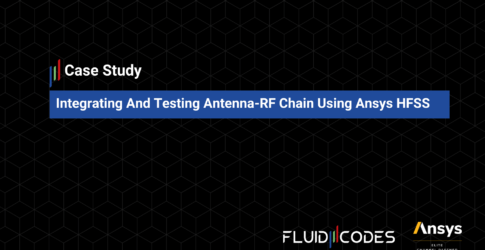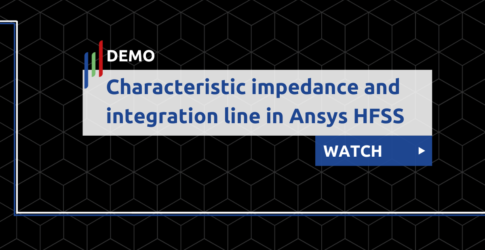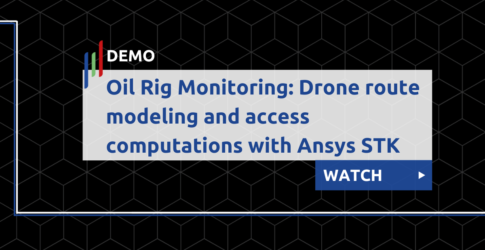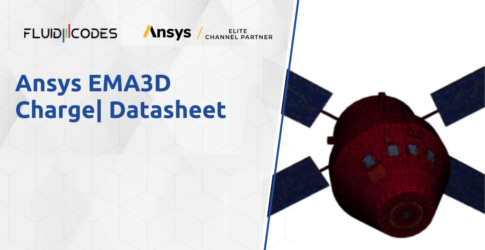Oil & Gas
Worldwide demand for oil and gas means increased production in offshore, small and mature fields; more remote, deeper, and reserves in harsher climate as well as unconventional resources. Producing oil and gas from these resources creates challenges that require advanced technologies to increase yield as well as reduce CAPEX and OPEX costs — all while efficiently managing production during the life of the field.
With mounting concerns for the environment, the industry is investing to reduce its operational footprint, greenhouse gas emissions and water usage; it is also striving to accelerate accident prevention and response. ANSYS oil and gas simulation software is enabling companies to design, verify, and deliver more reliable equipment for drilling, production, transport, process and refine at lower cost.
Applications
Efficient Oil and Gas Production
Advancements – such as equipment and processes that reduce time to first oil, construction costs, downtime and production bottlenecks – enable realization of intended operating margins.
Physics-based engineering simulation solutions are essential to efficient concept evaluation, design, and optimization of equipment, facilities and processes – for production optimization in conventional and unconventional resources, onshore or offshore. Engineering simulation software from Ansys enhances product development processes for projects in heavy oil, oil shale, deep water, Arctic, pre-salt, shale gas, LNG and oil-sand; in existing and new projects; and revisiting mature and small reserves with enhanced oil recovery practices.
Ansys technology focuses on multi-scale, multi-domain, multiphysics and system-level design. Leading companies use our software to evaluate multiple design considerations early in the project, reduce weight, explore accident and operation scenarios, evaluate technology, and perform parametric optimization – sometimes without building a prototype.
Environmental Stewardship
Energy companies invest in technology and processes designed to reduce greenhouse gas emission, decrease water usage, and prevent leaks and spills. Engineering simulation is the tool of choice in developing extraction processes that use less water, chemicals and energy to mobilize hydrocarbons. A smaller operational footprint comes from using equipment that efficiently reduces greenhouse gases and pollutants, or at least captures and sequesters greenhouse gases and pollutants once they are formed.
Ansys fluid dynamics technology readily addresses water usage in separator design and water recycling equipment. Leading companies leverage the tools to optimize produced-water management practices and develop equipment that optimizes the steam-to-oil ratio in SAGD processes.
Ansys solutions for combustion, electrical heating and electromagnetics help evaluate in situ concepts for mobilizing hydrocarbons in unconventional and heavy oil reserves.
Reducing energy use, pollutants and leaks requires efficient heat transfer, combustion and emissions. Ansys’ comprehensive solutions in fluid dynamics, fluid-thermal and fluid-mechanical systems design enable engineers to rapidly develop robust equipment and strategies.
Smart and Integrated Surface Subsea and Downhole Technology
Untapped oil and gas reserves are found in challenging conditions: deep waters, frigid environments, remote sites and small fields. Cost-efficient drilling and production for multi-billion dollar projects incorporate integrated processes, advanced control technologies and smart equipment, applied in reservoirs, wells, processing, transport and storage.
Engineering simulation can benefit all stakeholders in the supply chain, including parts and service providers. The methodology is ideal for building a framework for engineering collaboration.
Ansys technology helps energy companies leverage the power of high-performance computing and advanced physics-based simulation to develop and evaluate new drilling concepts and equipment, such as remote operation and horizontal/deep water drilling. It meets industry requirements for integrated, advanced physics in fluid mechanics, structural mechanics, electronics and electromagnetics.
Incorporating sensors and advanced electronics into equipment requires a systems-based approach. Engineering simulation aids in optimizing power requirements (including electronics cooling) and durability, protecting devices from impact and vibration. This integrated approach reduces intervention and maintenance over the product/process life cycle.
Equipment and Process Safety & Reliability
The industry’s focus on safety and reliability is rooted in the high cost of oil and gas production, maintenance and unscheduled downtime. Product failure can impact the environment as well as human life. Engineering groups focus on developing reliable equipment and processes that thrive under real-life conditions, which are often impossible to replicate in experiments.
Leading companies excel in four key areas:
- Reducing the product development cycle while increasing quality
- Minimizing product failure without cost over-runs and over-design
- Reducing maintenance and eliminating unscheduled repair
- Establishing development processes that streamline regulatory approval yet meet unique requirements
Engineering simulation offers the insight needed to meet these goals. Ansys technology provides integrated, proven engineering capabilities that can be applied throughout the product development cycle, from early design concept to validation to customer deployment.
Fluid mechanics, structural mechanics and electronics capabilities are complemented by parametric, optimization, design of experiment (DOE) and Six Sigma analysis tools. The end result is that Ansys customers design products that meet integrity, safety and reliability targets.
Transport And Storage
With production fields in challenging locations and remote sites, costs to move products from wellhead to storage to market escalate — and engineering challenges become more complex. Increasing natural gas and oil production from new liquid resources requires new pipelines, rail tanks, and storage facilities. Updating an aging infrastructure is also needed.
Innovative engineering simulation for oil and gas transport and storage help the industries’ entire supply chain meet its diverse challenges. Ansys CFD for oil and gas and Structural Mechanics for oil and gas software solutions meet the storage and transport modeling requirements including multiphase pipe flows, pipeline integrity, gas processing and compression, LNG and FLNG, and other multiphysics engineering applications associated with oil and gas transportation and storage.
By applying solutions that cover multiple physics in a virtual environment, engineers cost-effectively identify any source of failure: potential leakage, buckling, condensation, corrosion and erosion. Midstream companies use Ansys engineering simulation for oil and gas transport and storage early in the project planning and design. As a result, companies are able to plan reliable problem resolution strategies, before significant investments are made.
Ansys solutions are used for plant safety analysis, equipment design for natural gas processing, liquefaction, transport and re-gasification. In addition, Ansys simulation software and capabilities are enabling efficient design and transfer of technology from LNG to floating LNG applications. The detailed analysis and the reliable high quality simulations drive decisions in safety, gas dispersion, equipment design, transport, and design and placement of loading and receiving stations, as well as process and new technology development.
Ansys structural mechanics solutions are used to perform linear and non-linear analysis of pipeline failure, buckling, soil-pipe interaction, and bolted, treated and welded connections. In addition Ansys provides integrated solutions for fluid mechanics to study pipeline leaks, erosion, and transient multiphase analysis of gas–sand and liquid across a range of flow regimes.
Tank and pressure vessel design, blending, roll over, bypassing and short circuiting studies with ANSYS leads to safer and more cost effective design and operation of oil and gas storage and transport facilities and equipment.
Refining And Processing
Refiners and processors look to modernization, flex processes and advanced technologies to manage aging assets, varying crude, and greater demand for cleaner, higher-value intermediates. But modifying existing plants, designing processes, and building new upgrading units, cokers and flex-fuel equipment are capital-intensive. Engineering simulation is invaluable in accessing technology concepts, extending equipment life, and reducing maintenance and downtime. Ansys technology helps oil and gas engineering teams address complex issues associated with new systems design, upgrades, retrofits, and improved flow measurement and control equipment and electronics.
Our multiphysics software enables a systems-level perspective on sources of failure such as erosion/corrosion, flow maldistribution, vibration and fatigue. Fluid–thermal, fluid–mechanical and electro-mechanical analyses identify accurate design and placement of sensors and wireless devices, satisfying signal integrity and reliability targets. By revealing the root causes of potential failure, Ansys can help you identify problems at an early design stage, before significant investments have been made.
Pollution Control
Emissions and pollution from industrial processes are areas of intense global focus. Engineers today work on innovative ways to reduce, capture and control many undesirable byproducts. Energy and process industry companies use Ansys solutions to assist them in areas related to clean air and water, sustainable design, vapor capture, flaring equipment, and carbon reduction and capture. Environmental stewardship enables many companies to drive process optimization and capital investment decisions.
Reactor Design
Ansys simulation tools enable refining and process engineers to answer what-if questions as they design and enhance refining and petrochemical reactors. Users can optimize reactor performance by better understanding the effects and impacts of feed locations, vessel geometries and internals, vibrations, failures, dead spots, shear rates, resident time distributions, hot spots, and particle size distributions.
Upgrading
Heavy oil and oil sand upgrading equipment are energy intensive and create greenhouse gases. Ansys solutions in combustion, reaction, and particulate systems are used to design and optimize crackers, and distillation and hydrocracker components; they are also used for pollution control and reduction studies. Ansys structural mechanics solutions are used for plant equipment design, including analysis of pressure vessels, vibration, and fatigue.
Production
Oil and gas production is a balance of factors including safety, cost, reliability, performance, regulation and production targets over the life of the field. This balance is always difficult to achieve. Multiphase-flow, high-pressure, high-temperature conditions as well as changing operating conditions (hurricane wind forces and wave impact) create complex design challenges that involve interacting physics.
The solution must include the capabilities to automate, control remotely located equipment and minimize operating cost, environmental impact – while increasing reliability. Broader deployment of engineering simulation for oil and gas production is proving to lead safer more durable equipment and inspire more innovative processes for oil and gas industry. Ansys technology including well established CFD for oil and gas production and structural mechanics for oil and gas production delivers reliable physics that unravel complex problems, minimizing the need for physical testing and dramatically reducing time to market. Our tools create a low-cost, risk-free virtual design space that replicates deep-sea, Arctic and other harsh environments.
Engineering organization use proven Ansys engineering simulation for oil and gas capabilities to optimize production equipment for flow control, separation, water recycling and heat generation. Ansys CFD for oil and gas and structural mechanics software for oil and gas production use advanced simulation and analytical solutions to aid in studying thermal profiles, structural integrity, slugging, and hydrate and wax formation. Developing new strategies – for example, sand management and flow assurance for long-distance pipelines – requires higher-fidelity fluid dynamic simulation to account for 3-D–transient thermal and multiphase flows.
Leading companies leverage Ansys CFD for oil and gas, structural mechanics, electromagnetic and system design, software to develop billion-dollar ventures that must operate reliably for decades. The result is a high degree of product reliability and robustness that balances environmental, regulatory and human safety considerations.
Flow Assurance
With increased cost and complexity of developing subsea systems and the changing crude quality, increased produced water new strategies for sand management coupled with longer distance conventional flow assurance simulation require higher fidelity fluid dynamic simulation to account for 3D – transient thermal and multiphase flows. Ansys solutions are used to understand thermal profile, equipment structural integrity, slugging, sand transport and can be used for hydrate and wax formation.
Hydraulic Fracturing Equipment and Performance
Engineering simulation solutions are used to design hydraulic fracturing drilling and pressure pumping equipment. Simulation can also be used to design and optimize facilities and water recycle devices. There are also many environmental concerns, including how to reduce (1) the operational footprint at the drilling/production sites, (2) the amount of the fracking fluids and material used during the fracking process, and (3) emissions from the machinery. More specifically, Ansys and its partners provide solutions related to optimizing fracking stages and overall well performances and related geomechanics concerns related to oil shale or shale gas formations.
Marine and Subsea Systems
Ansys uniquely provides simulation software and experience in an integrated solution set for offshore, marine and subsea systems. The capabilities cover a broad range of applications involving naval architecture, propeller and vessel design, vortex induced motion (VIV), subsea power, and boosting, mooring, lifting, towing, and installation.
Production Equipment and Facilities
Downhole, wellhead , surface and topside , onshore, subsea and offshore — solutions from Ansys help design and optimize flow control, separation, water and sand management , heat generation and water recycling equipment. The underlying success of Ansys in developing established solutions for these applications is the result of well-proven capabilities developed for the energy and process industries.
Drilling And Completion
Performance and reliability are paramount with today’s well engineering and drilling challenges. The trends are to drill deeper, in harsher environments, at higher pressures and temperatures and to increase production from wells in unconventional fields.
During product development, engineers must investigate a variety of designs that investigate multiple physics disciplines faster, smarter and more efficiently. Engineering simulation supports robust design of every drilling component – from drill bits, rigs, sensors and tools to shale shakers and mud tanks.
Ansys engineering simulation for drilling and completions technologies provide insight into how equipment will perform in real-life conditions. Simulation can address potential failure modes at the earliest stages of product design, resulting in informed product design decision that lead to increased drilling speed and minimized maintenance and intervention. The operational insight that you gain can significantly reduce non-productive time.
For well engineering and intervention, Ansys software supports tool drop and impact, vibration, fatigue, electronic cooling, sensor design, seals and complex contact, and erosion analysis. Hydraulic fracturing companies use Ansys technology to optimize fracking stages, processes and machinery. Simulation provides a clear understanding of these important parameters for better well performance.
The suite of comprehensive engineering simulation for drilling and completions solutions offers multiphysics and systems-level capabilities to help engineers understand complex interdependencies and real-life performance of components, subsystems and complete drill-string systems. Ansys simulation is regularly used to make informed trade-offs among cost, safety and reliability that maximize outcome over the life of the well.
















